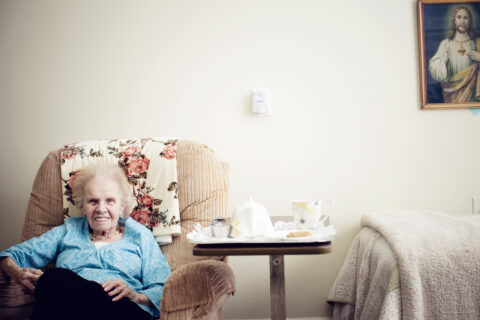The Hidden Costs of In-Home Care
It’s no secret that cost is a major concern for many families navigating the long-term care landscape: Nationwide, the median monthly fee for senior care ranges from $4,500 at an assisted living facility to more than $9,000 for a private room in a nursing home. The sticker shock sometimes leaves sons and daughters wondering would it be easier—not to mention cheaper—to just keep mom and dad at home?
In some cases, the answer might be yes. But it’s important to see the whole picture when making senior care decisions, and the price tag for aging in place often isn’t as straightforward as the one attached to a long-term care facility. A home health aide typically costs more than $60,000 per year—and much more for folks requiring round-the-clock care. Plus patient care is only part of the equation: Before deciding to keep your loved one at home, be sure to consider these hidden costs, as well.
Mortgage, Rent and Household Spending
Family members who take care of an aging loved one spend an average of $7,242 per year out-of-pocket on caregiving expenses, according to a recent AARP survey. Just over half of that amount is incurred from household expenses, including more than $1,100 annually devoted to rent and mortgage and nearly $1,500 each year on other fees such as utilities and upkeep.
House Modifications
A home that has provided decades of comfort can quickly become an obstacle course for an aging senior. Stairs, bathtubs and flooring turn hazardous; cabinets, countertops and light switches extend beyond reach; doorways become too narrow for wheelchairs and walkers. In order for a senior to age in place, many homes will need modifications to make life safer and simpler—and those alterations can be expensive. Home modifications account for just over 20 percent of all out-of-pocket household expenses paid by caregivers.
Caregivers’ Financial Stability
The cost of caregiving often isn’t as simple as paying a few short-term bills: Nearly half of all family caregivers report having a financial setback as a result of their caregiving, which can have repercussions lasting well into their own golden years. These setbacks include cutting down on personal spending, dipping into savings, reducing retirement contributions, borrowing from retirement savings, and even taking out a loan or resigning from a job. For the nearly two-thirds of caregivers who are still working, earning potential and job security can be compromised by the need to work fewer hours, take unpaid leave or alter work schedules.
Caregivers’ Own Health
Focusing on a family member’s well-being too often comes at the expense of one’s own. A quarter of all caregivers report cutting back on going to the doctor or buying medication for themselves as a result of their caregiving expenses. And the emotional and physical toll of caring is even more alarming: Studies show that 40 to 70 percent of caregivers exhibit clinically significant signs of depression, and people over age 66 who experience stress related to caregiving have a nearly two-thirds higher mortality rate than their peers.
Contemplating the next chapter in your loved one’s story? Click here to learn more about Bickford Senior Living and to find a branch near you.



